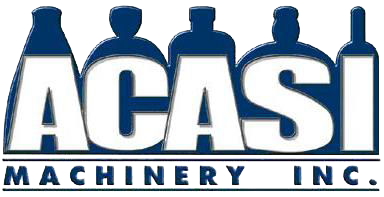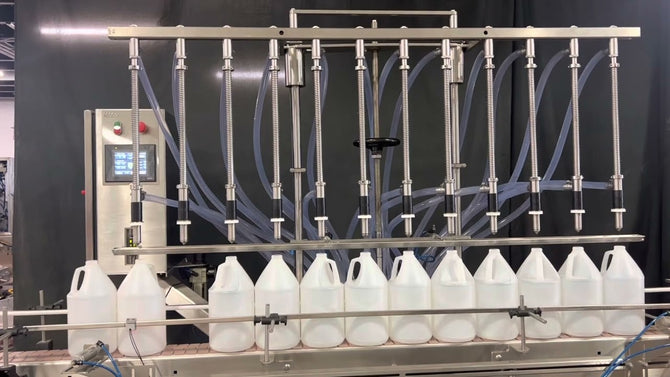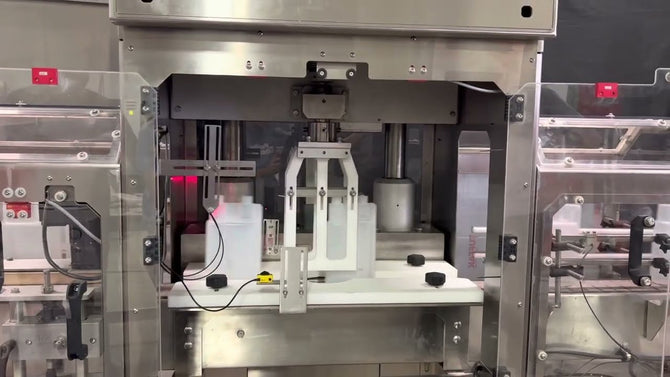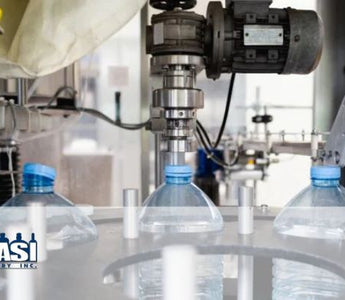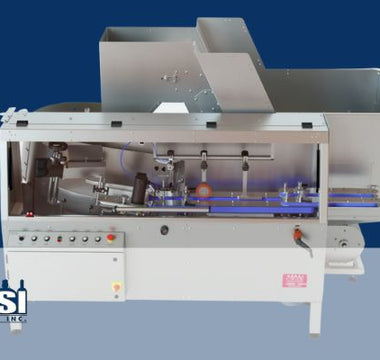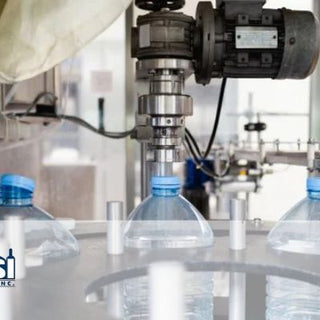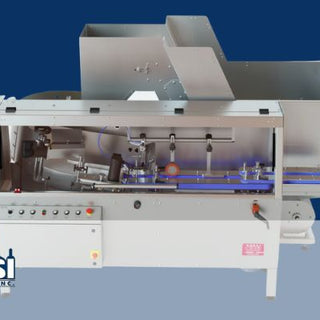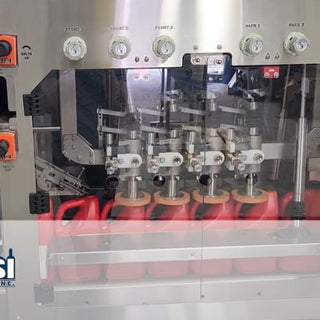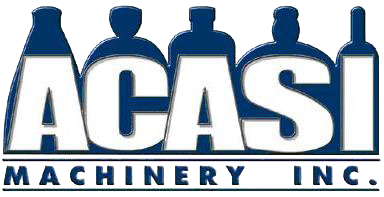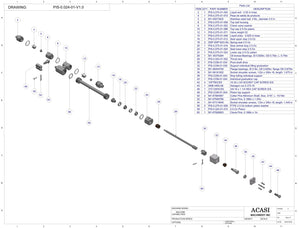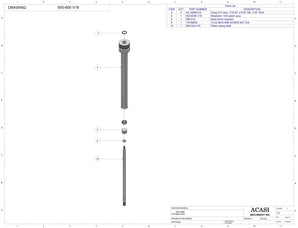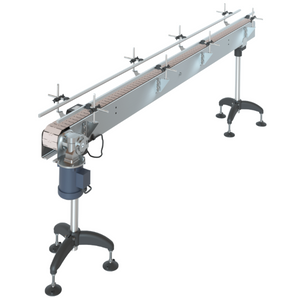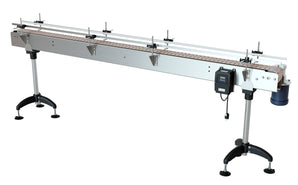An automatic capping machine sorts, feeds, and applies a cap or closure to a container as it moves down a production line without an operator. It can also be a semi-automatic machine that tightens or seals a cap or closure on a container with a person to start the cycle. Automatic capping machines are inline or rotary, and semi-automatic capping machines are manually activated by the operator or handheld. This article will explain how a bottle capper works and look at the different types of bottle capping machines and the different types of cap tighteners.
Types of Capping Machines
Capping machines come in various designs, each tailored to accommodate different cap styles, production speeds, and container types. The selection of a capping machine depends on factors such as automation level, cap size, and the level of precision required for sealing. Below, we will explore the different capping machines and their functions in greater detail.

Automatic Capping Machines
An automatic capping machine has several parts for different operations that work together as a single machine. The first part of the machine is for cap sorting and orienting. A person pours the caps into a sorter or feeder where the caps are all put into the same position in a single file. The caps move from the sorter to the cap chute that carries the caps to the point of pick-off. This is where the bottle and cap are put together while moving into the cap-tightening section and then released onto the conveyor.
There are several types of automatic bottle capping machines depending on the requirements. The requirements are how fast the line needs to run, cap size, cap type, and if there is a specific amount of tightening (torque) required. The industry refers to these machines as inline capping machines except for the rotary capping machines.
Spindle Cappers, Quill Cappers, Disk Cappers and Wheel Cappers
The different names are all used to describe the same type of capping machine. This type of capping machine is the most seen in a typical production line. It is primarily designed to work with continuous thread caps and some lug caps. They are suitable for speeds up to 200 per minute depending on the other requirements. The number of spindles determines the amount of tightening and speed capabilities. These machines come with 4 to 8 spindles and use clutches to control the upper level of tightening. Controlling the amount of tightening prevents damage or "scuffing" to the caps.
The clutches are either mechanical or air. Mechanical clutches are only adjustable when the machine is not running, and they will usually wear faster than an air version. They are a lower cost compared to the air clutch. An air clutch is adjustable while the machine is working, so the line does not shut down for minor adjustments, and they last much longer than a mechanical clutch.
Spindle cappers are good for cap sizes up to 70mm. This is due to the angled pick-off or cap placement that they use which increases the chance of a cross-thread on larger caps. There are options for the machines to reduce this error if the larger caps are only a part of what the machine will be running. These options are a vertical cap placement and running the first set of spindles in reverse to seat the cap down into the threads. Both options add cost to the machine and limit the speed at which large caps run on the line.
This type of capping machine is very cost-effective for a wide range of cap and bottle combinations.
Snap Capping Machines
Caps that snap down onto a bottle require a different machine design from the spindle capper called a snap capper. In this capping machine, the bottles strip the caps from the chute using the same angular application as a spindle capper. Then the caps are simply pressed down onto the bottle using a powered belt, single overhead wheel or a simple flat plate the bottle and cap move under. When included with a spindle capper the snap capper machine components allow for one machine to work with both types of caps on the same line with one machine.
Chuck Capping Machines
Chuck capping machines work by tightening the cap with a chuck coming straight down onto the bottle with the cap. The caps go through a sorter and move from a chute into a pocket that holds them for the chuck to pick them up and place them directly onto the container and tighten the cap.
A chuck capping machine provides better cap-to-bottle alignment and has more consistent tightening of the cap. The precise tightening is by the chuck which holds the cap having a magnetic release point or the drive of the chuck can be servo-driven which has greater control through the electronics of the machine.
The straight-down cap application makes this a better method for large caps and other difficult-to-engage cap and bottle combinations. The alignment of the cap and bottle happens with precise positioning of the bottle to the cap chuck. Specific parts for each container and cap size provide the precise placement. These container and cap-specific components are change parts.
There are also chuck capping machines that use the strip method for small cap size applications that better manage cap tightening compared to a spindle capper.
This type of capping machine is the best choice for lines with large cap sizes, limited speed requirements, and a small range of cap and container sizes. The precision of this machine makes it more expensive than a spindle capper. Higher precision is a good investment to limit capping errors and reduce line downtime depending on the other requirements.
Rotary Chuck Capping Machines
Rotary Chuck Capping Machines work like chuck capping machines with straight-down cap-to-bottle placement. The difference is that rotary machines run without stopping the bottle and have more heads to get higher line speeds. The rotary chuck capping machines have 3 heads or more. The limit for speed is around 20 per head per minute depending on the cap and bottle combination, the product in the container, and the fill level of the product. This type of capping machine is the most expensive due to its capabilities for precision and speed.

ROPP Capping Machines
ROPP is a type of cap called Roll-On-Pilfer-Proof. These are the metal caps typically seen on beverages, olive oil, and others. The cap is a metal shell that is put on the bottle and a specially designed chuck that rolls the metal shell into the threads of the bottle. The chuck forms the metal to the top of the bottle. This type of bottle capping machine is in the same class as a chuck capping machine and a rotary chuck capping machine.
T-Top Corking Machines
T-top corks or bar-top corks are typical for many distilled spirits in bottles. This type of capping machine is also like a chuck capping machine due to the required straight-down application required to get the corks into the bottle.
Semi-automatic Capping Machines
Semi-automatic machines require a person to start by putting a cap on the bottle. Different types of semi-automatic capping machines tighten or finish a capping process. The different types of semi-automatic capping machines are below.
Cap-tightening Machines
There are two typical types of cap tighteners. Both designs have a person placing the cap before the machine completes the tightening process. The first type uses disks, wheels, or even belts to spin the cap down tight as the bottle moves on the conveyor. This device is also the same as the tightening section of a spindle capping machine. The second type uses a single-head chuck which is a metal shell with a rubber insert to grip the cap. It starts spinning, lowers down onto the top of the cap, and spins it down tight on the bottle. There is also a third style with the shell and insert chuck that is hand-held by a person. This type of semi-automatic capping machine is suspended overhead to carry the weight of the unit for the person, or they are carried by a person.
While it is less efficient than just tightening the cap by hand, these semi-automatic capping machines are more consistent in how tightly the caps are applied, reduce operator fatigue, and reduce the chances of a person being hurt by tightening the cap by hand.
Semi-automatic Snap Capping and T-cork Machines
These are the simplest semi-automatic capping machines. These can be a powered dive with a pressure plate or a powered incline belt to push the closure down on or in the container. This step is after the operator has placed the closure onto the top of the container.
Semi-automatic ROPP Capping Machines
Semi-automatic ROPP capping machines have a person place the shell onto the bottle and then place it into the machine. The person then starts the cycle with a switch for the machine to spin and drop onto the bottle neck to form the shell onto the bottle threads. After the ROPP chuck retracts, the person removes the bottle and puts another bottle in for the next cycle.
This machine is for smaller companies that are not ready to spend on an automatic capping machine.
Specialty Types of Bottle Capping Machines
While standard capping machines handle most production needs, some industries require specialized capping solutions to maintain product integrity, extend shelf life, or meet unique packaging requirements.
We will explore some of the most common specialty capping machines and their applications.
Vacuum Capping Machines
Vacuum capping machines work by pulling out the air in the container headspace before placing the cap. The container is placed in a chamber where a vacuum is drawn and then the cap is applied. This type of capping is for products that need to be protected from oxygen and airborne contaminants such as pharmaceuticals and other high-value sensitive items.

Steam Flow Capping Machines
Steam flow capping machines work by using steam to heat the inner side of the cap to sanitize it and soften the flexible gasket material inside the cap. The steam flow is also sent into the headspace of the container to sterilize the headspace. These types of capping machines apply the cap by the strip method as the container moves along the conveyor while being held and using two belts running in opposite directions on the top of the cap to tighten the lid. This type of capping is typical with lug-style caps that are metal and have a flexible "button" in the top. The "button" is pulled down when the steam cools and the air contracts in the headspace. Opening the bottle lets air in and the "button" pops up indicating that the seal has been broken. This type of capping machine is typical in the food and beverage industry for items like pickles and tea packed in glass with a metal lid.
Choosing the Right Capping Machine for Your Needs
There is a wide range of choices of the types of capping machines available. The best choice depends on the needs of your project and budget. Consider discussing your project with an experienced machinery supplier to help make the best choice for your capping machine project.
